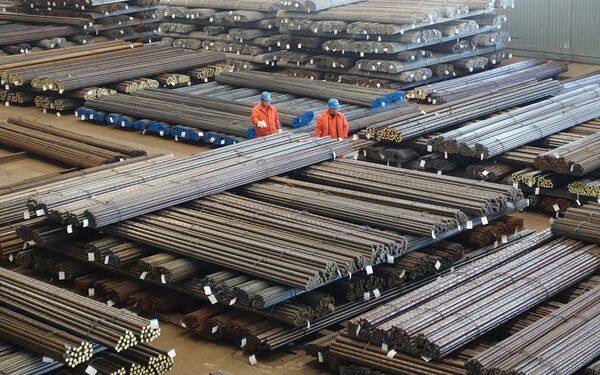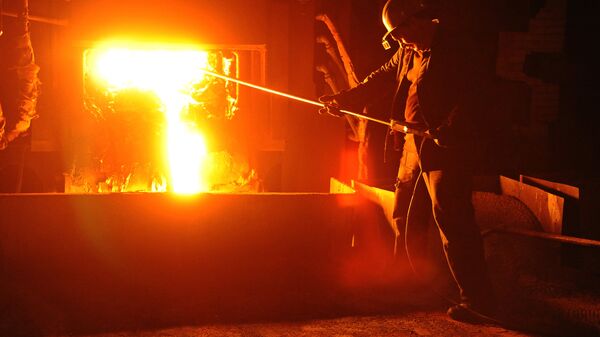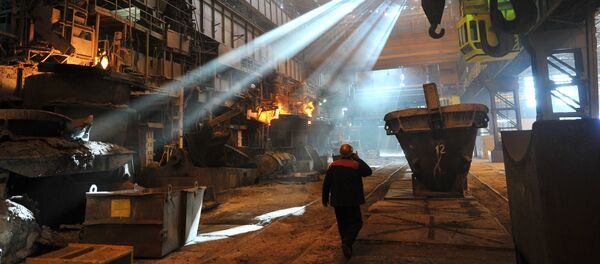However, the past 15 years have seen significant changes in the world's metallurgy market, with the volume of steel production rapidly increasing in India, Brazil and Turkey. China is the world's main steel producer; it generates far more steel than any other country.
Between 1990 and 2014, the output of steel in China increased 12-fold to 823 million tons.
Apart from China, steel production is quickly growing in South Korea, where steel output in 2014 was on par with that of Russia: 71.5 million tons.

Speaking to Sputnik, Professor Ruslan Dzarasov of the Plekhanov Russian University of Economics in Moscow said that China added significantly to total world steel production, which grew by 1.94 times in the past fifteen years.
As a result of stiff competition in the global ferrous metal market, the output of steel in Eastern Europe declined by almost 20 percent between 1990 and 2014. In Russia, the reduction in steel exports can be replaced by domestic demand, according to Dzarasov.
Russia’s finished steel product production rises for the first five months https://t.co/xI2j12IDS0
— Yieh Corp. (@YiehCorp) 23 июня 2017 г.
He said that Russia's most effective response to growing international competition in the steel market could be the continuous improvement of technology and drastic modernization of production, including the development of so-called carbon additive.
That's why oil companies are typically reluctant to develop such production, Dzarasov explained.
He pointed to Russia's relevant levers to develop this production, including four-party agreements with the country's oil companies on investment programs.
"These agreements should comply with the interests of other industries; in particular, they should stipulate the output of carbon additive in the necessary quantities," Dzarasov said.
He recalled that Russian specialists had developed the technology for the production of so-called semi-coke, which also helps to significantly save on the use of coke itself.
"The introduction of these technologies could help reduce the expenses of domestic ferrous metallurgy, which would contribute to a substantial increase in its competitiveness in the world market," Dzarasov pointed.
He noted that the development and production of construction materials in the modern world economy is controlled and influenced by large-scale transnational capital.
He added that the low cost of sea transportation ensures the availability of the widest range of deposits and allows companies to supply these with the world's best quality raw materials, obtained at a minimal cost. It is on these terms that steel production in the Asia-Pacific region is currently developing, Dzarasov concluded.





